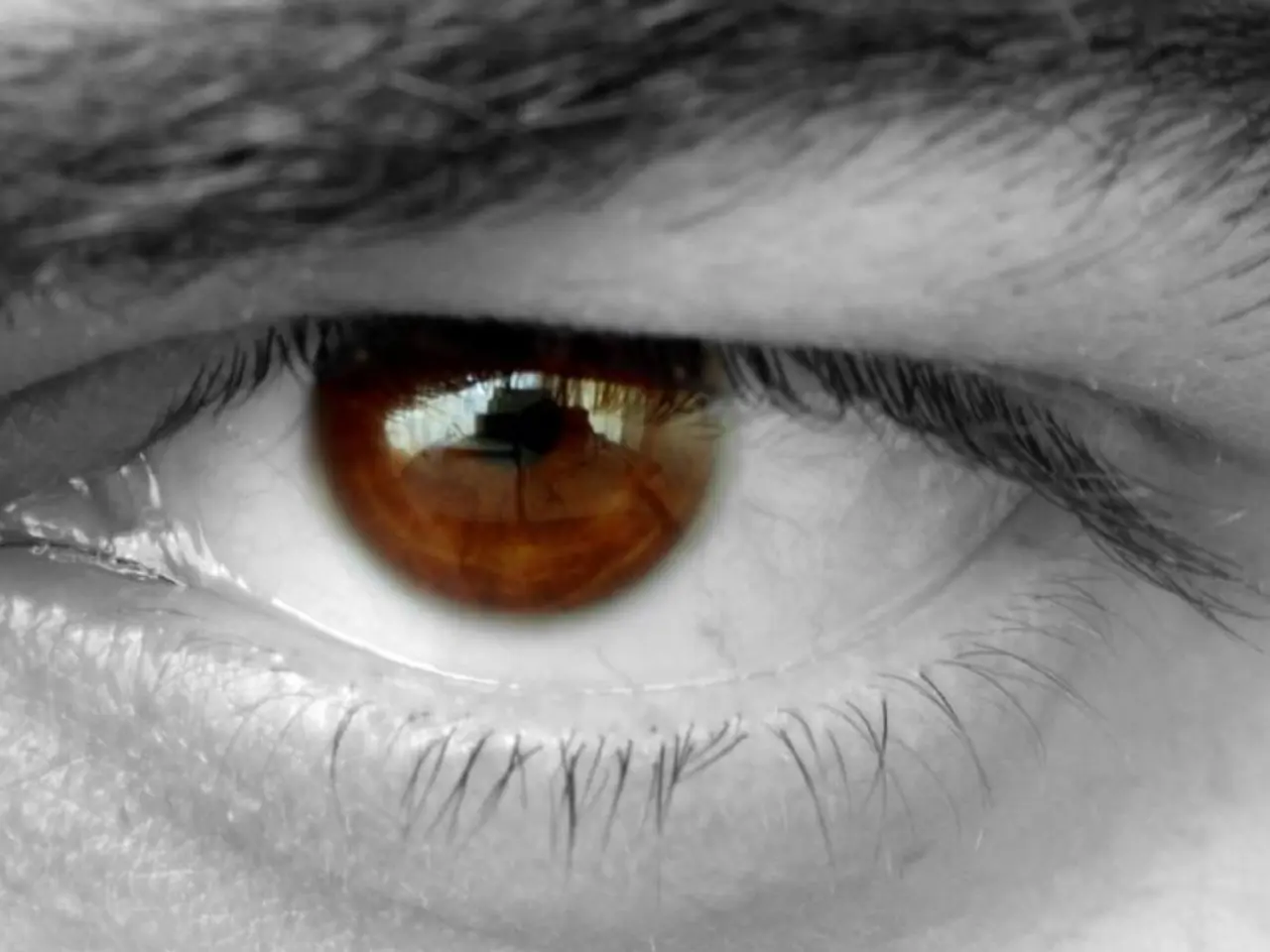Pink Eye: Recognizing Symptoms, Diagnosis Process, and Therapeutic Approaches
Understanding Chronic Infective Conjunctivitis
Chronic infective conjunctivitis is a persistent form of pink eye that can last more than four weeks. This condition is often caused by bacterial, viral, or chlamydial infections, and can be exacerbated by mechanical or environmental factors.
Bacterial Causes
Chronic bacterial conjunctivitis is commonly due to Staphylococcus or Streptococcus species, often linked to factors such as contaminated contact lenses, poor hygiene, or exposure to irritants.
Viral Causes
Adenovirus is a common cause of viral conjunctivitis that can become chronic in some cases. Herpes simplex virus can cause unilateral conjunctivitis with more severe symptoms including corneal involvement, potentially leading to chronic inflammation.
Chlamydial Conjunctivitis
This cause is significant in chronic cases and tends to present subacutely over weeks. It often involves unilateral conjunctivitis with mucopurulent discharge and hyperemia, requiring specific diagnosis and treatment.
Other Factors
Other contributing factors to chronicity include allergies, mechanical irritation (e.g., from contact lenses or foreign bodies), underlying ocular surface disorders, and exposure to irritants like chemicals or smoke.
Giant Papillary Conjunctivitis
Giant papillary conjunctivitis represents a chronic inflammatory response to foreign bodies (e.g., contact lenses) and can be associated with secondary infection or persistent irritation contributing to chronic conjunctivitis.
Newborns and Conjunctivitis
In newborns, pinkeye can be due to infection, irritation, or a blocked tear duct. In many states, antibiotic drops or ointment are given to newborns to prevent conjunctivitis. Bacterial conjunctivitis in newborns can be caused by Neisseria gonorrhoeae or Chlamydia trachomatis. Newborns who develop pinkeye should receive urgent medical attention.
Complications and Prevention
Complications from conjunctivitis are rare, but they can be more severe in newborns and may include pneumonia if an STI is present. People can lower their risk of contracting or transmitting infective conjunctivitis by practicing good hand washing, avoiding touching the eyes and face, and avoiding sharing personal items.
Symptoms and Treatment
Symptoms of conjunctivitis can include redness, discharge, a watery eye, soreness, swelling, itching, burning, and discomfort when using contact lenses. A doctor may diagnose conjunctivitis by examining symptoms, asking questions, and less commonly, taking a swab to test for bacteria or viruses. Treatment may include antibiotics, warm compresses, rinsing the eyes with saline solution, and a gentle, warm massage for a blocked tear duct.
Other Causes of Red Eyes
Other causes of red eyes include blepharitis, acute glaucoma, keratitis, and iritis. It's important to seek medical attention if you experience persistent redness or other symptoms associated with conjunctivitis.
Resolution Without Medical Treatment
Nearly half of infective conjunctivitis cases resolve without medical treatment. However, it's always best to consult a healthcare professional if you suspect you have conjunctivitis, especially if symptoms persist or worsen.
Conjunctiva and Its Function
The conjunctiva is a thin layer of cells that covers the inner surface of the eyelids and the whites of the eyes. Its function includes lubricating the eye, protecting it from foreign particles, and providing a smooth surface for the eyelid to move over.
- Chronic infective conjunctivitis, a persistent form of pink eye, may last more than four weeks and can be caused by bacterial, viral, or chlamydial infections.
- Staphylococcus or Streptococcus species are common causes of chronic bacterial conjunctivitis, often linked to factors such as contaminated contact lenses, poor hygiene, or exposure to irritants.
- Adenovirus is a common cause of viral conjunctivitis, which can become chronic in some cases.
- Herpes simplex virus can cause unilateral conjunctivitis with more severe symptoms, including corneal involvement, potentially leading to chronic inflammation.
- Chlamydial conjunctivitis often presents subacutely over weeks, requiring specific diagnosis and treatment.
- Allergies, mechanical irritation, underlying ocular surface disorders, and exposure to irritants like chemicals or smoke are other contributing factors to chronicity.
- Giant papillary conjunctivitis, a chronic inflammatory response to foreign bodies like contact lenses, can be associated with secondary infection or persistent irritation.
- In newborns, pinkeye can be due to infection, irritation, or a blocked tear duct; antibiotic drops or ointment are given to newborns in many states to prevent conjunctivitis.
- Bacterial conjunctivitis in newborns can be caused by Neisseria gonorrhoeae or Chlamydia trachomatis; newborns who develop pinkeye should receive urgent medical attention.
- Complications from conjunctivitis are rare but can be more severe in newborns and may include pneumonia if an STI is present.
- People can lower their risk of contracting or transmitting infective conjunctivitis by practicing good hand washing, avoiding the touching of eyes and face, and avoiding sharing personal items.
- Symptoms of conjunctivitis can include redness, discharge, a watery eye, soreness, swelling, itching, burning, and discomfort when using contact lenses.
- Blepharitis, acute glaucoma, keratitis, and iritis are other causes of red eyes; it's important to seek medical attention if you experience persistent redness or other symptoms associated with conjunctivitis.
- Nearly half of infective conjunctivitis cases resolve without medical treatment, but it's always best to consult a healthcare professional if you suspect you have conjunctivitis, especially if symptoms persist or worsen.
- Psoriasis, dry eyes, diabetes, cancer, obesity, ulcerative colitis, Crohn's disease, depression, and eye health are some other medical-conditions or health-and-wellness issues that a person may seek treatment for.
- Science, predictive drops for dry eyes, and personalized mental-health treatments (switchers, treaters, seekers) are emerging solutions in various medical fields, aiming to improve patients' quality of life and eye-health.




